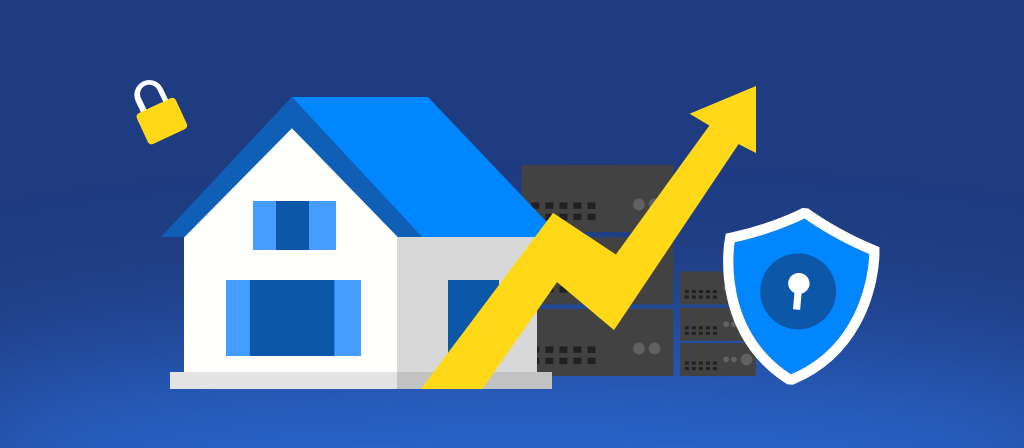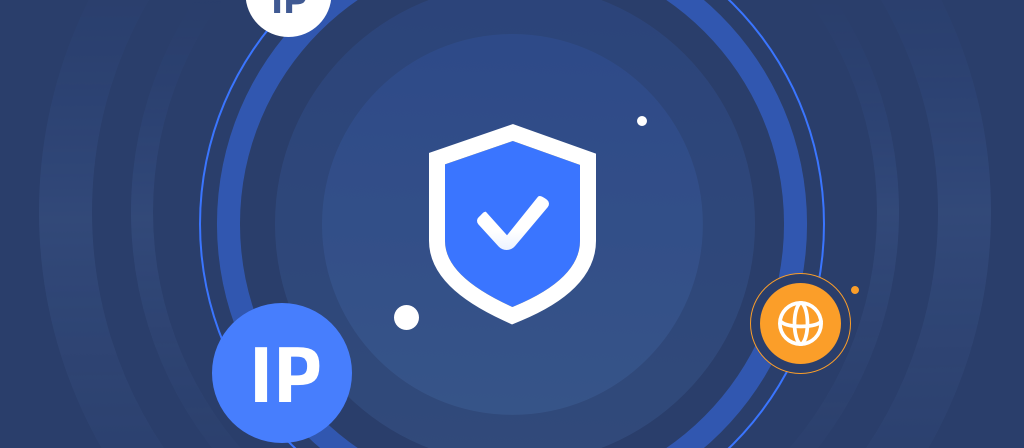
Currently, static proxies and rotating proxies are widely used. This article introduces the main differences and usage scenarios between the two in detail. Users who are not familiar with them can take a look!
What is a static proxy?
A static proxy is a proxy whose IP address does not change. If you use a static proxy, your IP address will remain the same for the entire session (usually lasting 5 to 45 minutes) and for all subsequent requests.
Static proxy service providers allow users to select an IP address from a list of IP addresses. Static proxies excel in speed and stability, and they can provide adequate anonymity if you choose a high-quality provider, but they are more easily blocked and detected.
What is a rotating proxy?
A rotating proxy is when a user’s IP address changes periodically or randomly after they connect to a proxy server. Each time they connect to a proxy server, they are assigned a new IP address. IP addresses change frequently, and a user may have multiple different IP addresses in a short period of time.
Main features of static proxies
1. Reliable speed: Static proxies usually use fast and reliable servers. This is very suitable for users who need stable connection tasks.
2. IP does not change: Depending on the provider, you can keep your IP for a limited time or as long as you want.
3. High interception risk: If you make multiple requests with one IP address, the verification code may be triggered.
4. Limited performance: Free tools with scarce sticky sessions or small pools are not enough to complete large-scale web scraping or other tasks involving massive data.
Main features of rotating proxies
1. Maximum anonymity: Due to the frequent change of IP addresses, your Internet activities cannot be tracked, with high anonymity and privacy, so that you can browse the web safely.
2. Anti-bot bypass: Since your IP address will be constantly rotated, even if you perform complex data scraping tasks, the possibility of being detected and blocked is very small.
3. Accurate geolocation: Due to the large IP pool, rotating proxies usually allow you to narrow the IP address range to a specific location so that it can be accessed quickly.
4. Potential cost issues: Rotating proxies may be costly because their prices vary according to the size of the traffic.

Differences and similarities between static and rotating proxies
1. Static proxy
Security: Low. Static proxy IP is fixed and uses a single IP address for long-term connection, so it is easy to be detected or blocked.
Performance: Good. Guaranteed high uptime and good speed.
Price: Usually low. The price varies by IP address.
Maintenance: High. You have to maintain the IP list manually.
Exclusivity: Shared or exclusive. You can get a static proxy that is only for your use.
2. Rotating proxy
Security: High. Rotating proxy has a low probability of being detected or blocked because the IP is not fixed and will rotate at any time.
Performance: Depends on the situation. Although some rotating proxies are slower due to more complex mechanisms, high-quality providers allow connections with high speed, high bandwidth and low latency through fast servers.
Price: Based on traffic or based on IP pools. The price depends on the number of connections you make or the IP addresses you can access.
Maintenance cost: Low. Proxy server rotation is automated.
Exclusivity: Shared. Proxy servers always provide IP addresses from a shared IP pool. However, high-quality providers will provide a large enough IP pool to mitigate any potential disadvantages.
Pros and Cons of Static Proxies vs Rotating Proxies
Static Proxies
The distinguishing feature of static proxies is that a single IP address is connected to the server throughout the request process. This gives them some advantages, but also brings some disadvantages.
Advantages:
1. Faster. When you connect to a website using a static proxy, your request is routed through an intermediary server that connects to the website using a separate IP address. Since you are always connected to that IP address, there is no need to route through a gateway server, which reduces the routing steps. This means that static proxies are faster than rotating proxies and have more stable connections.
2. Simulate user behavior. Some websites, such as e-commerce websites, have features that require you to always connect to the same address.
Shopping carts and step-by-step checkouts are some examples where you need to maintain the same connection in order for the website to remember you. Static proxies are better at simulating the behavior of human users with their ability to connect continuously.
3. Lower price. The price of static proxies varies depending on the address and provider, but they are generally cheaper than rotating proxies.
Disadvantages:
1. Limited range. Static proxies use only one connection per request, which means that each IP address comes from the same geographical physical location every time. Some websites block visitors based on their location, so geo-sensitive data may be blocked if you use a static proxy.
2. Limited scale. If you try to use a static proxy for a large-scale data collection or web scraping project, you must send a large number of requests from the same IP address to complete it. This will usually cause you to be blocked after sending a certain number of requests, so static proxies are not ideal for such applications.
3. Easier to detect. Their long connections may mimic user behavior and appear legitimate on some servers, but since static proxies do not come from ISPs like residential proxies, they may be relatively easy to identify and block.
Rotating Proxy
While static proxies can maintain connections using a single IP address, rotating proxies route requests through a gateway server that switches addresses periodically. Rotating proxies have a number of advantages over static proxies, as their switching frequency is specified by an automated rotation robot.
Advantages:
1. More customizable. Rotating proxies can mix IP addresses based on physical location and other attributes, and send any number of requests from different addresses specified by the user. This makes them more flexible than static proxies and allows you to access some geo-specific data that would otherwise be inaccessible.
2. More scalable. Since rotating proxies can deploy a large number of requests simultaneously, they are better at large-scale data collection, such as that common in web scraping. If you need to search a large amount of data on the web, choose a rotating proxy.
3. More difficult to detect. Rotating proxies are mostly located in residential areas and come from actual Internet Service Providers (ISPs). Because of this, and the fact that rotating proxies may be replaced if disabled, rotating proxies are generally more difficult to detect.
Disadvantages:
1. Slower. Unlike static proxies, which connect to websites in a single “hop,” rotating proxies must go through a gateway server. This extra step makes them slower than static proxies.
2. Smaller bandwidth. Rotating proxies are often located in residential areas and usually not from a data center, so their bandwidth may be lower than that of static proxies.
3. Higher price. Rotating proxies are usually sold based on the amount of traffic they need to handle, and providers must also acquire and maintain all of those addresses. This usually makes them more expensive than static proxies.
Use Cases for Static Proxies
So far, you have learned what static proxies are, how they work, their pros and cons. So, let’s talk about where you should use them:
1. Manage multiple accounts
If you are responsible for managing multiple accounts that are on platforms that monitor suspicious IP behavior in e-commerce, social media, or banking, you should consider using a static proxy for account management.
2. Maintain a consistent identity
A static proxy server can help you maintain a consistent digital identity. This way, you are more likely to gain the trust of platforms that monitor user activity patterns.
3. Access geo-restricted content
Websites and streaming services often restrict their services based on your geographic location. If you are locked out of any platform because your network, region, or country is inaccessible, choose a static proxy server in a different region with access rights.

Use Cases for Rotating Proxies
Here are some common applications for rotating proxies:
1. Web Scraping
Frequently changing IP addresses can help you avoid detection when performing large web scraping projects with automated crawlers.
Using rotating proxies (which automatically change the IP addresses from which requests are sent) can reduce the likelihood that your website will detect the source of the requests, allowing you to collect data with less disruption.
2. SEO Monitoring
Using rotating proxies is essential when collecting data from search engines to improve SEO, to avoid rate limits and bans caused by sending too many requests.
You can also use these IP addresses to collect SERP data for specific regions, thereby optimizing marketing efforts for different regions.
3. Ad Validation
Rotating proxies can help you monitor the performance of your ads across different regions and platforms. You can also use these servers to test ads and flag fraudulent and invalid traffic.
4. Market Research
Rotating proxies are essential for efficient market research, as it enables businesses to collect large amounts of data from multiple sources without the risk of any data being blocked.
By using a different IP for each request, businesses can access pricing information, analyze consumer behavior, predict trends, and more.
Static and Rotating Proxies Comparison
1.Static Proxies
IP Addresses:Fixed. IP addresses are purchased or leased from data centers or ISPs
Best for:Companies targeting less-complex websites that can benefit from a faster pool of static IPs. Included use cases: account management and ad verification.
Block Risk:Detectable
2.Rotating Proxies
IP Addresses:Variable. A new IP address is assigned if configured that way.
Best for:Companies targeting sophisticated websites that can benefit from IP rotation
Block Risk:Harder to detect
When to use a static proxy
Static proxies are great for:
1. Managing multiple accounts: Keeping a consistent IP address prevents your account from being flagged or blocked.
2. Completing multi-step transactions: Ensure continuity of processes that always require the same IP address.
3. Accessing IP-restricted networks: Very useful when specific IPs are whitelisted for access.
When to use a rotating proxy
The advantages of a rotating proxy are:
1. Large-scale web crawling: IPs are constantly rotating, and spreading requests across multiple IP addresses can reduce the risk of being discovered.
2. Accessing geographically restricted content: Since IPs are not fixed, it is possible to switch IP addresses in different regions to bypass restricted regions.
3. Protecting anonymity during data mining: Ensure that data collection activities are not discovered.
Conclusion
Static proxies and rotating proxies have different usage scenarios. If you need to use a proxy but don’t know how to choose, take a look at this article. Here we will introduce and explain in detail the definition, characteristics, advantages and disadvantages, use cases, and differences of static proxies and rotating proxies, which can help you better choose the proxy that suits you!



